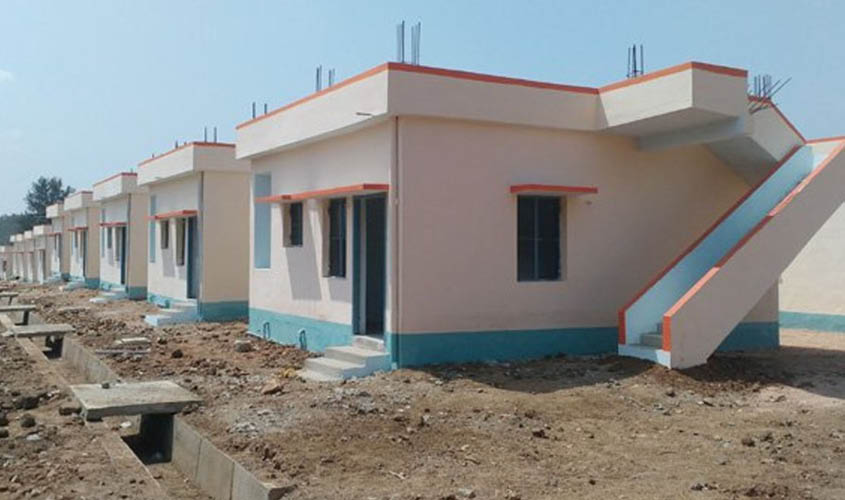The annual average of building houses has risen to 27.86 lakh as compared to UPA-II government’s 24.7 lakh.
The Narendra Modi-led BJP government has built about 1.25 crore houses in the last about four years for the people living in rural areas, with an average of 27.86 lakh houses per year.
According to government figures, the UPA-II government constructed 89.65 lakh houses as part of the Indira Awas Yojana (IAY) in their last four years from 2010-11 to 2013-14. In contrast, the current NDA government constructed 111.44 lakh houses in the first four years between 2014-15 and 2017-18 under Pradhan Mantri Awas Yojana (Rural). If the number of houses constructed in the first half of the current year are taken into account, it could be about 1.25 crore, said an official.
Official figures suggest that the number of houses constructed has seen an increasing trend over the years. During the NDA-I government headed by Atal Bihari Vajpayee, an average of 11.68 lakh houses were built per year. This average was 17.39 lakh under UPA-I and 24.7 lakh under UPA-II. Under the Modi government, this average has gone to 27.86 lakh houses per year.
Public housing programmes in India started with the rehabilitation of refugees immediately after Independence and it has since been a major focus
Though IAY addressed the housing needs of the people living in rural areas, some gaps were found during evaluations and performance audit conducted by the Comptroller and Auditor General of India (CAG) in 2014, following which the Modi government restructured IAY scheme into Pradhan Mantri Gramin Awas Yojana in April 2016. The urban equivalent of the scheme was earlier known as Rajiv Awas Yojana which has now been restructure into Pradhan Mantri Sahari Awas Yojana.
Faster completion of houses has been assisted by payment of assistance directly into the beneficiary account through direct benefit transfer. The government organises rural mason training programmes to facilitate availability of quality masons in the rural areas. It also uses space technology and IT platforms to monitor stages of houses to completion and each stage is geo-tagged.
The scheme is supported by state governments which ensure availability of construction material at reasonable prices. These houses have facilities like toilet, LPG connection, electricity connection, drinking water. In some states, these houses are coming up in clusters, while at other places they are being constructed on the beneficiary’s land.
Thus, under the Modi government people are truly being pulled out of poverty.

